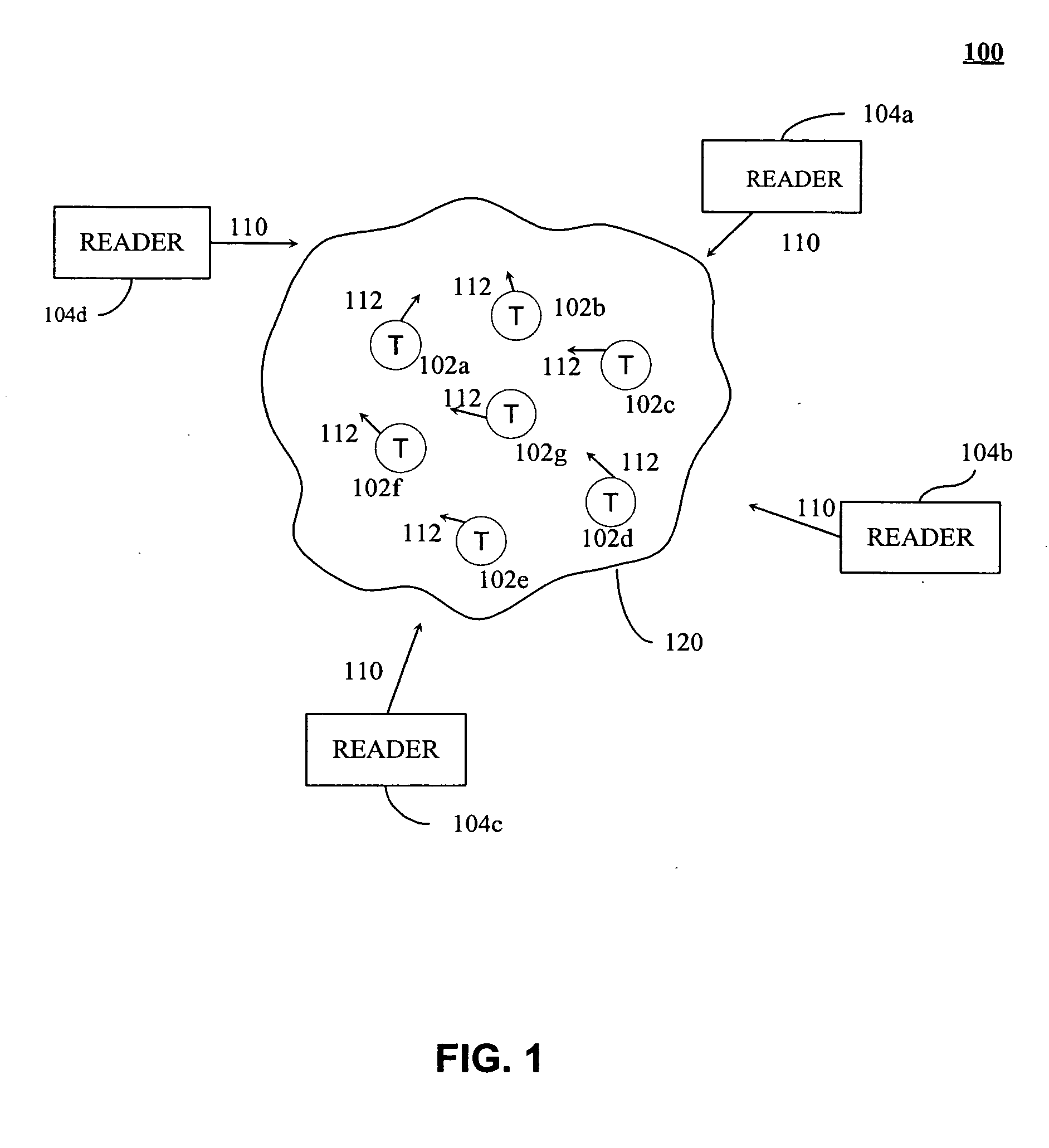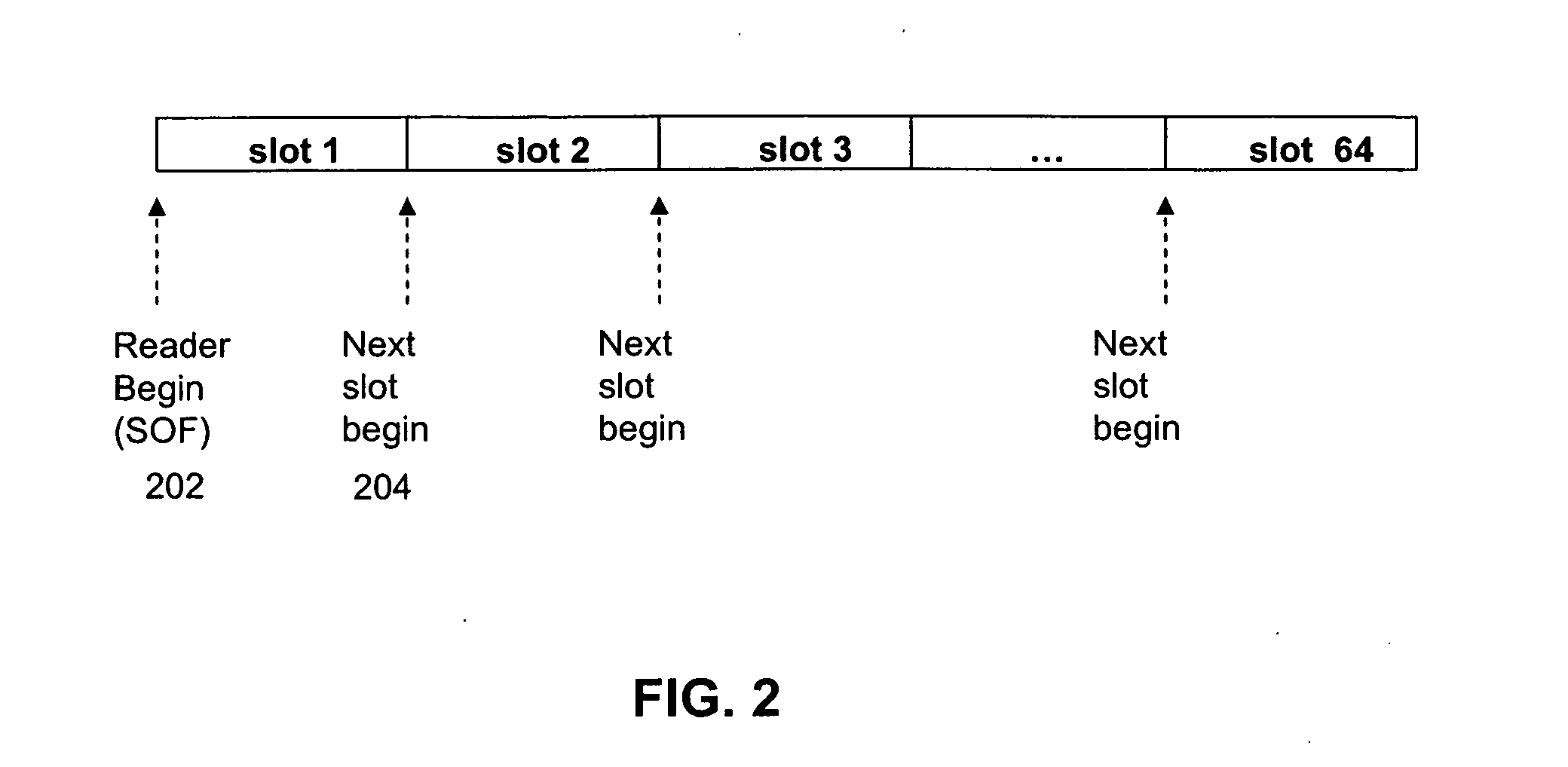Method and system for optimizing radio frequency identification (RFID) reader operation
a radio frequency identification and reader technology, applied in the field of radio frequency identification (rfid), can solve the problems of inefficiency in detection and/or monitoring of tags
- Summary
- Abstract
- Description
- Claims
- Application Information
AI Technical Summary
Benefits of technology
Problems solved by technology
Method used
Image
Examples
example rfid reader
[0063]FIG. 7 illustrates an example RFID reader 700 that may be used according to an embodiment of the invention. In this example, RFID reader 700 includes RFID controller 702, processor 704, memory 706, encoder 708, modulator 710, decoder 712, demodulator 714, transmission antenna(e) 716 and receive antenna(e) 718. Although not shown in FIG. 7, an RF front-end may also be included in reader 700.
[0064] RFID controller 702 provides information, such as interrogations and commands, to tags. The reader information is encoded by encoder 708, modulated by modulator 710 and transmitted by antenna 716. Radio frequency responses are received from a tag population by antenna 718. The tag responses are demodulated by demodulator 714 and decoded by decoder 712. RFID controller 702 processes the decoded responses. In the current embodiment, RFID controller 702 includes a processor 704 and associated memory 706 in addition to any other circuitry required for an RFID reader (not shown). Processo...
PUM
 Login to View More
Login to View More Abstract
Description
Claims
Application Information
 Login to View More
Login to View More - R&D
- Intellectual Property
- Life Sciences
- Materials
- Tech Scout
- Unparalleled Data Quality
- Higher Quality Content
- 60% Fewer Hallucinations
Browse by: Latest US Patents, China's latest patents, Technical Efficacy Thesaurus, Application Domain, Technology Topic, Popular Technical Reports.
© 2025 PatSnap. All rights reserved.Legal|Privacy policy|Modern Slavery Act Transparency Statement|Sitemap|About US| Contact US: help@patsnap.com



